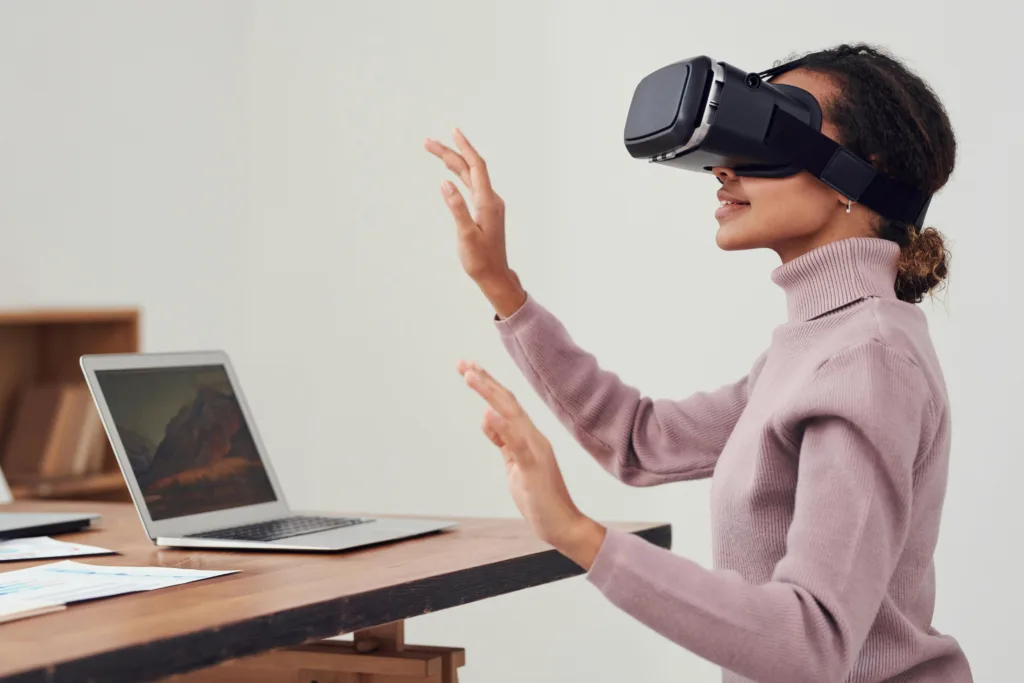
Augmented reality (AR) is no longer a futuristic concept relegated to science fiction. According to the statistics there were 1.4 billion AR user devices in active use in 2023.
It’s a technology that’s rapidly weaving itself into the fabric of our lives, transforming industries, redefining how we interact with information, and even changing the way we perceive our surroundings.
Unveiling the Layers of Augmented Reality
AR is not simply about adding digital elements to the real world. It’s about creating a dynamic, interactive experience that blurs the boundaries between physical and virtual. To understand AR, we need to explore its core components:
• Sensors and Input: AR systems rely on sensors like cameras, GPS, accelerometers, and gyroscopes to gather information about the user’s location, orientation, and movement. This data is crucial for positioning virtual objects accurately in the real world.
• Computer Vision: The Eyes of AR: This technology allows AR systems to interpret the world around us. Computer vision algorithms can recognize objects, faces, landmarks, and even analyze scenes in real-time, enabling the placement of virtual elements in context.
• Digital Content Creation: Augmented reality depends on the creation of digital content – 3D models, images, videos, audio, and interactive elements – that can be seamlessly integrated into the user’s real-world view.
• Rendering and Display: Sophisticated rendering engines process the collected sensor data and the digital content, overlaying the virtual onto the real-world view through smartphones, tablets, smart glasses, or other AR-enabled devices.
The Multifaceted Applications of AR
The possibilities of AR extend far beyond the playful world of Pokémon GO. Here are some examples of how this technology is shaping industries:
• Retail Revolution: Imagine browsing a furniture store without physically visiting it. AR allows you to visualize furniture in your own home, virtually try on clothes, and even interact with product information in real-time. For example, Style.me provides AR views for apparel, footwear and accessories. Such an experience helps customers to make their mind and find item that fits them perfectly.
• Education Reimagined: AR brings history textbooks to life, allowing students to explore 3D models of historical sites, interact with virtual replicas of artifacts, and even step inside a virtual human anatomy to learn about the body’s systems.
• Healthcare Innovation: Doctors can use AR overlays to visualize patient anatomy during surgery, providing increased precision and reducing the risk of complications. AR also helps in physical therapy by providing real-time guidance and feedback. Study: A 2023 study by the National Institutes of Health showed that AR-assisted surgery led to significantly reduced surgical time and improved accuracy.
• Manufacturing Efficiency: AR can guide workers through assembly processes, provide access to repair manuals, and even highlight potential safety hazards, optimizing production efficiency and safety.
• Tourism and Travel: AR apps can enhance the travel experience by providing real-time information about landmarks, historical sites, and local attractions, enriching the visitor’s understanding of their surroundings. These apps can translate signs, provide historical context, and even guide tourists through unfamiliar cities, creating a more immersive and enriching travel experience.
The Future is Augmented
As AR technology matures, we can expect to see even more remarkable advancements:
• Improved Realism: AR experiences will become more realistic and immersive with advancements in rendering, lighting, and 3D modeling.
• Greater Accessibility: AR hardware will become more affordable and accessible, leading to wider adoption across industries and consumer markets.
• Integration with Other Technologies: AR will be seamlessly integrated with other technologies, such as artificial intelligence (AI), the Internet of Things (IoT), and 5G networks, creating even more powerful and personalized experiences.
Conclusion
Augmented reality is not just about adding a layer of digital information to the real world. It’s about transforming how we perceive, interact, and experience the world around us. AR holds the potential to revolutionize a wide range of industries, enhance our learning, improve healthcare outcomes, and even redefine our relationship with technology. The future is augmented, and it’s a future filled with possibilities.
Learn more about latest trends of technology:
Augmented Reality and Virtual Reality: Use Cases in 2024
Autonomous Vehicles: What is new
The Rise of Quantum Computing: What You Need to Know





